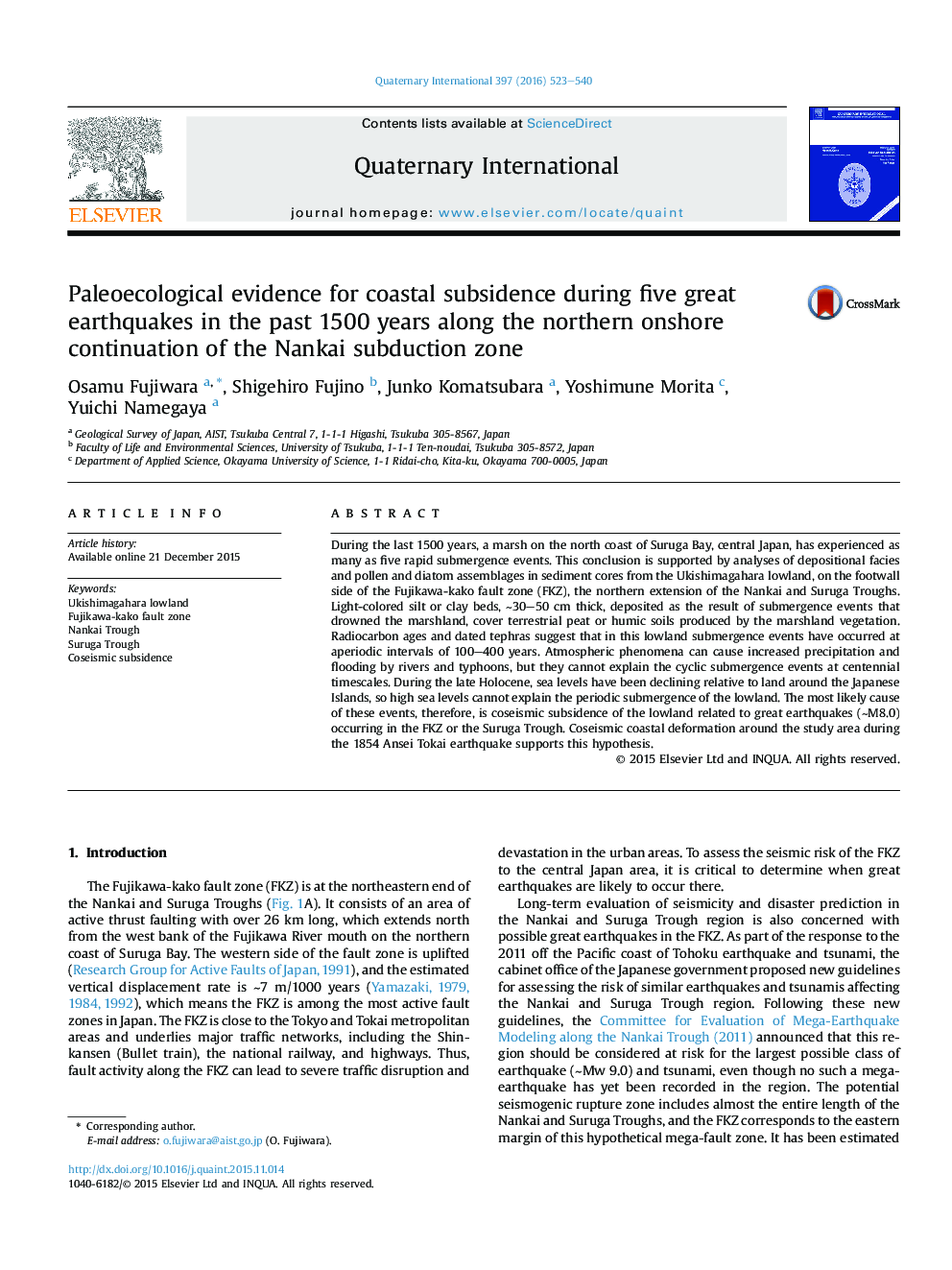| کد مقاله | کد نشریه | سال انتشار | مقاله انگلیسی | نسخه تمام متن |
|---|---|---|---|---|
| 7451390 | 1484101 | 2016 | 18 صفحه PDF | دانلود رایگان |
عنوان انگلیسی مقاله ISI
Paleoecological evidence for coastal subsidence during five great earthquakes in the past 1500 years along the northern onshore continuation of the Nankai subduction zone
ترجمه فارسی عنوان
شواهد پالئواکولوژیک برای فروپاشی ساحلی در طی پنج زلزله بزرگ در 1500 سال گذشته در طول ادامه شمال در ناحیه فرورانش نانکی
دانلود مقاله + سفارش ترجمه
دانلود مقاله ISI انگلیسی
رایگان برای ایرانیان
موضوعات مرتبط
مهندسی و علوم پایه
علوم زمین و سیارات
زمین شناسی
چکیده انگلیسی
During the last 1500 years, a marsh on the north coast of Suruga Bay, central Japan, has experienced as many as five rapid submergence events. This conclusion is supported by analyses of depositional facies and pollen and diatom assemblages in sediment cores from the Ukishimagahara lowland, on the footwall side of the Fujikawa-kako fault zone (FKZ), the northern extension of the Nankai and Suruga Troughs. Light-colored silt or clay beds, â¼30-50Â cm thick, deposited as the result of submergence events that drowned the marshland, cover terrestrial peat or humic soils produced by the marshland vegetation. Radiocarbon ages and dated tephras suggest that in this lowland submergence events have occurred at aperiodic intervals of 100-400 years. Atmospheric phenomena can cause increased precipitation and flooding by rivers and typhoons, but they cannot explain the cyclic submergence events at centennial timescales. During the late Holocene, sea levels have been declining relative to land around the Japanese Islands, so high sea levels cannot explain the periodic submergence of the lowland. The most likely cause of these events, therefore, is coseismic subsidence of the lowland related to great earthquakes (â¼M8.0) occurring in the FKZ or the Suruga Trough. Coseismic coastal deformation around the study area during the 1854 Ansei Tokai earthquake supports this hypothesis.
ناشر
Database: Elsevier - ScienceDirect (ساینس دایرکت)
Journal: Quaternary International - Volume 397, 18 March 2016, Pages 523-540
Journal: Quaternary International - Volume 397, 18 March 2016, Pages 523-540
نویسندگان
Osamu Fujiwara, Shigehiro Fujino, Junko Komatsubara, Yoshimune Morita, Yuichi Namegaya,
